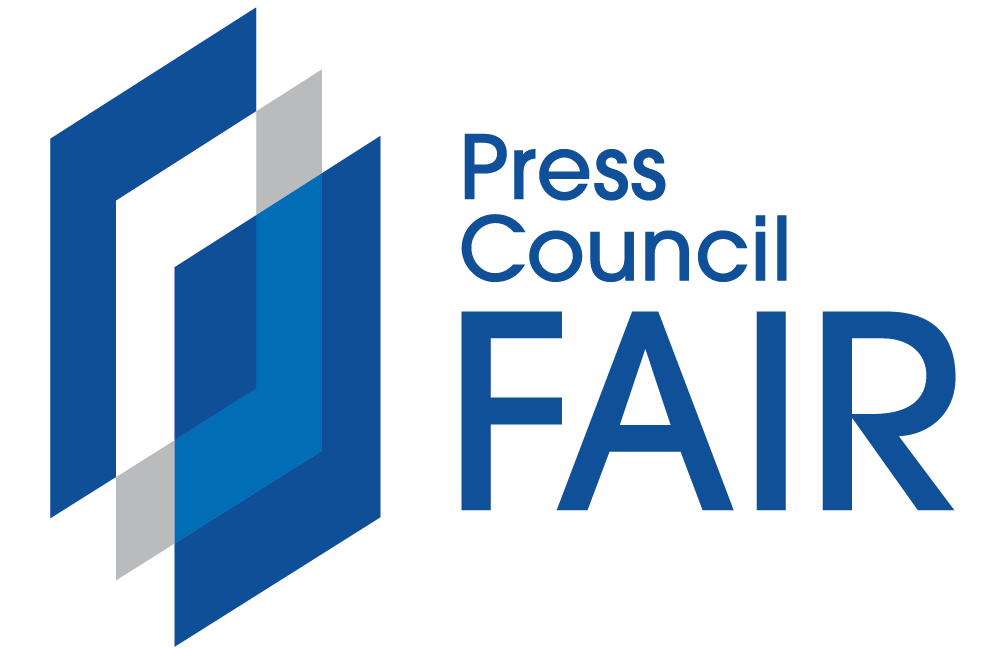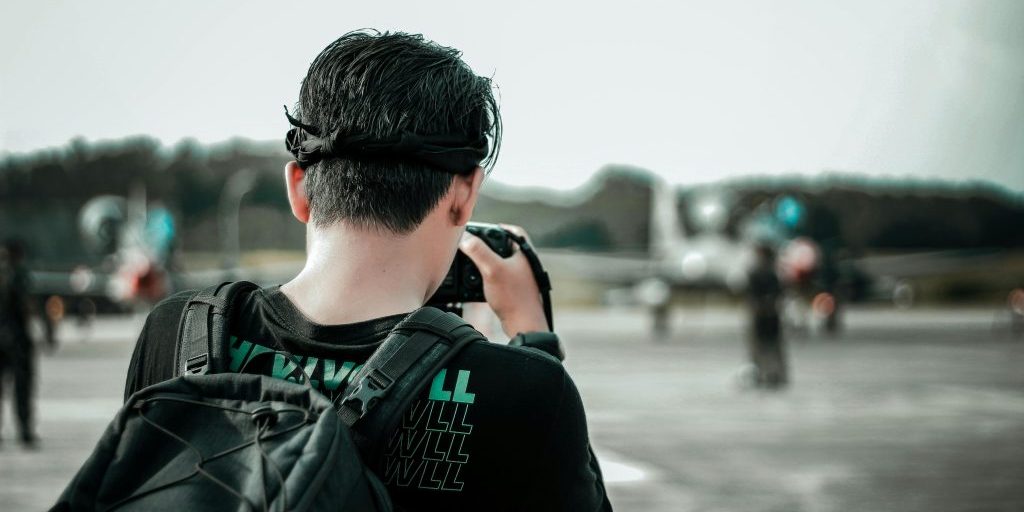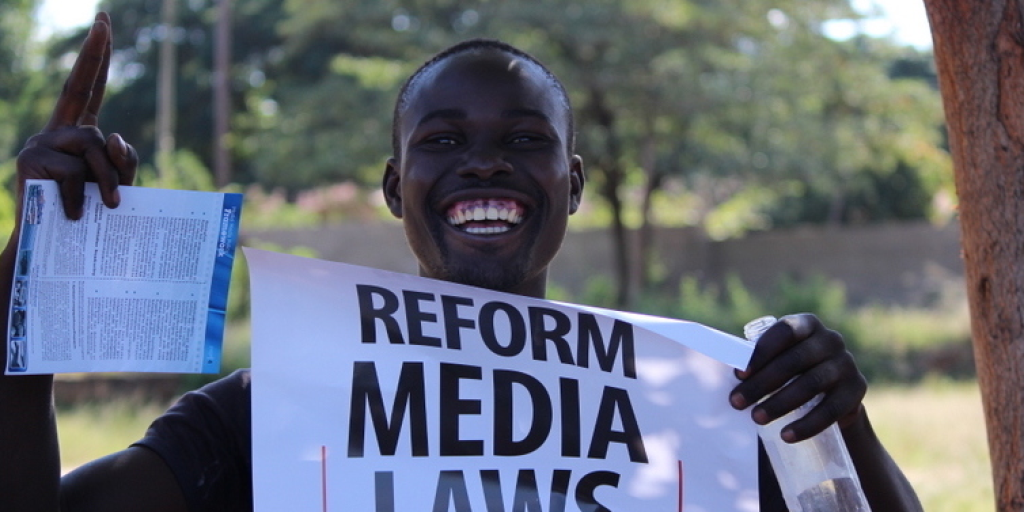‘Economic fragility a leading threat’: World Press Freedom Index 2025
PICTURE: Nur Andi Ravsanjani Gusma/Pexels
Physical attacks against journalists are the most visible violations of press freedom, but economic pressure is also a major, more insidious problem.
The economic indicator on the RSF World Press Freedom Index now stands at an unprecedented, critical low as its decline continued in 2025. As a result, the global state of press freedom is now classified as a ‘difficult situation’ for the first time in the history of the Index.
At a time when press freedom is experiencing a worrying decline in many parts of the world, a major – yet often underestimated – factor is seriously weakening the media: economic pressure.
Much of this is due to ownership concentration, pressure from advertisers and financial backers, and public aid that is restricted, absent or allocated in an opaque manner.
The data measured by the RSF Index’s economic indicator clearly shows that today’s news media are caught between preserving their editorial independence and ensuring their economic survival.
‘Guaranteeing freedom, independence and plurality in today’s media landscape requires stable and transparent financial conditions,’ says Anne Bocandé, RSF Editorial Director. ‘Without economic independence, there can be no free press.’
‘When news media are financially strained, they are drawn into a race to attract audiences at the expense of quality reporting, and can fall prey to the oligarchs and public authorities who seek to exploit them
‘When journalists are impoverished, they no longer have the means to resist the enemies of the press – those who champion disinformation and propaganda. The media economy must urgently be restored to a state that is conducive to journalism and ensures the production of reliable information, which is inherently costly.
‘Solutions exist and must be deployed on a large scale. The media’s financial independence is a necessary condition for ensuring free, trustworthy information that serves the public interest.’
Of the five main indicators that determine the World Press Freedom Index, the indicator measuring the financial conditions of journalism and economic pressure on the industry dragged down the world’s overall score in 2025.
The economic indicator in the 2025 RSF World Press Freedom Index is at its lowest point in history, and the global situation is now considered ‘difficult’.
The ongoing wave of media shutdowns
- According to data collected by RSF for the 2025 World Press Freedom Index, in 160 out of the 180 countries assessed, media outlets achieve financial stability ‘with difficulty’ – or ‘not at all’
- Worse, news outlets are shutting down due to economic hardship in nearly a third of countries globally. This is the case in the United States (57th, down two places) Tunisia (129th, down 11 places) and Argentina (87th, down 21 places)
- The situation in Palestine (163rd) is disastrous. In Gaza, the Israeli army has destroyed newsrooms, killed nearly 200 journalists and imposed a total blockade on the strip for over 18 months
- In Haiti (112th, down 18 places), the lack of political stability has also plunged the media economy into chaos
- Even relatively well-ranked countries such as South Africa (27th) and New Zealand (16th) are not immune to such challenges
- Thirty-four countries stand out for the mass closures of their media outlets, which has led to the exile of journalists in recent years. This is especially true in Nicaragua (172nd, down nine places), Belarus (166th), Iran (176th), Myanmar (169th), Sudan (156th), Azerbaijan (167th) and Afghanistan (175th), where economic difficulties compound the effects of political pressure
The U.S.: leader of the economic depression
In the U.S., where the economic indicator has dropped by more than 14 points in two years, vast regions are turning into news deserts. Local journalism is bearing the brunt of the economic downturn: over 60% of journalists and media experts surveyed by RSF in Arizona, Florida, Nevada and Pennsylvania agree that it is ‘difficult to earn a living wage as a journalist’, and 75% believe that ‘the average media outlet struggles for economic viability’.
The country’s 28-place drop in the social indicator reveals that the press operates in an increasingly hostile environment.
President Donald Trump’s second term has already intensified this trend as false economic pretexts are used to bring the press into line. This led to the abrupt end to funding for the U.S. Agency for Global Media (USAGM), which affected several newsrooms – including Voice of America and Radio Free Europe/Radio Liberty – and, as a result, over 400-million citizens worldwide were suddenly deprived of access to reliable information.
Similarly, the freeze on funding for the U.S. Agency for International Development (USAID) halted U.S. international aid, throwing hundreds of news outlets into a critical state of economic instability and forcing some to shut down – particularly in Ukraine (62nd).
Media concentration and the dominance of online platforms
These serious funding cuts are an additional blow to a media economy already weakened by the dominance that tech giants such as Google, Apple, Facebook, Amazon and Microsoft have over the dissemination of information.
These largely unregulated platforms are absorbing an ever-growing share of advertising revenues that would usually support journalism. Total spending on advertising through social media reached $247.3-billion in 2024, a 14% increase compared to 2023.
These online platforms further hamper the information space by contributing to the spread of manipulated and misleading content, amplifying disinformation.
In addition to the loss of advertising revenue, which has severely disrupted and constrained the media economy, media ownership concentration is another key factor in the deterioration of the Index’s economic indicator and poses a serious threat to media plurality
Data from the Index shows that media ownership is highly concentrated in 46 countries and, in some cases, entirely controlled by the state.
This is evident in Russia (171st, down nine places), where the press is dominated by the state or Kremlin-linked oligarchs, and in Hungary (68th), where the government stifles outlets critical of its policies through the unequal distribution of state advertising.
It is also apparent in countries where ‘foreign influence’ laws are used to repress independent journalism, such as Georgia (114th, down 11 places). In Tunisia (129th, down 11 places), Peru (130th) and Hong Kong (140th), where public subsidies are now directed toward pro-government media.
Even in highly ranked countries like Australia (29th), Canada (21st) and Czechia (10th), media concentration is cause for concern. In France (25th, down four places), a significant share of the national press is controlled by a few wealthy owners.
This growing concentration restricts editorial diversity, increases the risk of self-censorship and raises serious concerns about newsrooms’ independence from the economic and political interests of their shareholders.
The Index’s survey shows that editorial interference is indeed compounding the problem. In over half of the countries and territories evaluated by the Index (92 out of 180), a majority of respondents reported that media owners ‘always’ or ‘often’ limited their outlet’s editorial independence.
In Lebanon (132nd), India (151st), Armenia (34th) and Bulgaria (70th, down 11 places), many outlets owe their survival to conditional financing from individuals close to the political or business worlds.
The majority of respondents in 21 countries, including Rwanda (146th), the United Arab Emirates (164th) and Vietnam (173rd), said media owners ‘always’ interfered editorially.
Global state of press freedom is ‘difficult’ – a historical first
For over 10 years, the Index’s results have warned of a worldwide decline in press freedom. In 2025, a new low point emerged: the average score of all assessed countries fell below 55 points, falling into the category of a ‘difficult situation’.
More than six out of 10 countries (112 in total) saw their overall scores decline in the Index.
For the first time in the history of the Index, the conditions for practising journalism are ‘difficult’ or ‘very serious’ in over half of the world’s countries, and ‘satisfactory’ in fewer than one in four.
An increasingly red map
In 42 countries – harbouring over half of the world’s population – the situation is classified as ‘very serious’. In these zones, press freedom is entirely absent and practising journalism is particularly dangerous.
This is the case in Palestine (163rd), where the Israeli army has been annihilating journalism for over 18 months, killing nearly 200 media professionals – including at least 43 murdered while working – and imposing a blackout on the besieged strip.
Israel (112th) continued its decline in the Index, dropping 11 places.
Three East African countries – Uganda (143rd), Ethiopia (145th) and Rwanda (146th) – entered the ‘very serious’ category this year. Hong Kong (140th) also moved into the red zone for the first time, and is now the same colour as China (178th, down six places), which has joined the bottom three countries, alongside North Korea (179th) and Eritrea (180th).
In Central Asia, Kyrgyzstan (144th) and Kazakhstan (141st) have darkened the region.
In the Middle East, Jordan (147th) plummeted 15 places, largely due to repressive legislation used against the press.
The Index by region: the gap widens between the European Union and other zones
The Middle East-North Africa region remains the most dangerous in the world for journalists, harbouring the mass destruction of journalism in Gaza by the Israeli army. Every country in the region is in a ‘difficult’ or ‘very serious’ press freedom situation, except Qatar (79th).
The press is caught between crackdowns from authoritarian regimes and persistent economic precariousness
Tunisia (129th, down 11 places), the only North African country to fall this year, recorded the sharpest drop in the region’s economic indicator (down 7.97 points, down 30 places), due to a political crisis where independent outlets are under direct threat.
Iran (176th), where journalists are gagged and all critical viewpoints are suppressed, remains near the bottom of the Index, alongside Syria (177th), which is still awaiting a profound transformation of its media landscape post-Bachar al-Assad.
Out of the 32 countries and territories in the Asia-Pacific region, 20 have seen their economic score decline in the 2025 World Press Freedom Index. The systemic media control in authoritarian regimes is often inspired by China’s propaganda model.
China (178th) remains the world’s largest jail for journalists and re-entered the bottom trio of the Index, coming just ahead of North Korea (179th).
Meanwhile, the concentration of media ownership in the hands of influential groups linked to those in power – as seen in India (151st) – combined with growing economic pressures even in established democracies, means that press freedom in the region faces mounting repression and increasing uncertainty.
In Sub-Saharan Africa, press freedom is experiencing a worrying decline. Eritrea (180th) retained its position as the worst-ranking country in the Index. The economic score deteriorated in 80 per cent of the region’s countries.
In the Democratic Republic of the Congo (133rd, down 10 places), where the economic indicator plummeted, the media landscape is hampered by persistent polarisation and repression in the east of the country. Similar patterns appeared in other conflict zones, such as Burkina Faso (105th, down 19 places), Sudan (156th, down seven places) and Mali (199th, down five places).
In these situations, newsrooms are forced to self-censor, close or go into exile.
The hyper-concentration of media ownership in the hands of political figures or business elites without safeguards for editorial independence remains a recurring problem, as seen in Cameroon (131st), Nigeria (122nd, down 10) and Rwanda (146th).
By contrast, Senegal (74th) moved up 20 places as its authorities launched economic reform initiatives, which still need to be implemented and carried out in a consultative manner.
In the Americas, the vast majority of countries (22 out of 28) have seen their economic indicators decline. In the U.S. (57th), Trump’s second term as president has brought a troubling deterioration in press freedom
In Argentina (87th), President Javier Milei has stigmatised journalists and dismantled public media. Press freedom has been weakened in Peru (130th) and El Salvador (135th), undermined by propaganda and attacks on outlets critical of those in power.
Mexico (124th), the most dangerous country for journalists in the region, has also seen a sharp decline in its economic score. Nicaragua (172nd) comes in last in the region and sits at the bottom of the Index, as the Ortega-Murillo regime has dismantled the independent media.
In contrast, Brazil (63rd) has continued its recovery after the Bolsonaro era.
Europe still leads the regional rankings but is increasingly divided. The Eastern Europe- Central Asia (EEAC) region has experienced the steepest overall decline worldwide, while the EU-Balkans zone has the highest overall score globally, and its gap with the rest of the world continues to grow.
However, even the EU-Balkans zone is hurt by the media’s economic crisis, as seven in 10 countries (28 out of 40) have seen their economic score decline. What’s more, the implementation of the European Media Freedom Act (EMFA) – which could benefit the media economy – is still pending.
The situation is worsening in Portugal (8th), Croatia (60th) and Kosovo (99th). Norway (1st) remains the only country in the world to enjoy a ‘good’ rating across all five indicators of the Index. It held on to its top spot for the ninth consecutive year, increasing its lead over other countries.
Estonia (2nd) moved up to second place, closely followed by the Netherlands (3rd), which overtook Sweden (4th) in the world’s top three.
Africa
This concentration is particularly notable in countries such as Nigeria (122nd, down 10 places), Sierra Leone (56th) and Cameroon (131st). The issue is compounded by news outlets’ dependence on advertising revenue, which generally comes from the communication budgets of the state and major corporations, as seen in Benin (92nd) and Togo (121st).
This can push newsrooms to self-censor for fear of losing funding, a concern that is not unfounded: in Kenya (117th), for example, the telecom company Safaricom pulled its advertisements from The Nation after the newspaper exposed the company’s role in surveilling citizens’ communications.
The news sector is also weakened by the lack of consistent and transparent public subsidies. In many countries, government aid is either rare or distributed arbitrarily.
In Mauritania (50th), these subsidies are weakened by poor governance, which compromises media independence. In Senegal(74th), ongoing reforms have prioritised making government aid to the media more transparent, although journalists argue the proposed measures may exacerbate intensifying tax inspections and the suspension of advertising contracts with public entities.
Journalists and news outlets at risk
In the Sahel region, the deteriorating security situation directly affects the media’s economic viability. In Burkina Faso (105th, down 19 places) and Mali (119th, down 5 places), some outlets have suspended operations and their staff have been internally displaced or forced into exile.
Journalists critical of the Burkinabè authorities have even been forcibly conscripted into the army, reinforcing the oppressive climate already muzzling the press.
In Sudan (156th), the ongoing conflict has worsened the dire financial state of news outlets, which are forcibly instrumentalised by the warring parties. The same is true in the eastern Democratic Republic of Congo (133rd, down 10 places), where dozens of radio stations have closed and many local journalists are displaced – and, subsequently, unemployed.
In addition to security challenges, heavy judicial and administrative measures also severely impact the media’s financial health. In several countries, authorities use the justice system or regulatory state bodies to sanction news organisations.
In Guinea (103rd), the withdrawal of Djoma TV and Espace FM’s broadcasting licences led to the loss of over 700 jobs. In Mali (119th), the six-month suspension of Joliba TV by the national communications regulator caused a sharp drop in the outlet’s advertising revenue.
The reddening map
Seven African countries are now in the bottom quarter of the Index. Uganda (143rd), Ethiopia (145th), and Rwanda (146th) have moved into the ‘very serious’ category this year. Burundi (125th), which was already near the bottom of the Index, fell 17 places.
Despite the release of Radio Igicaniro presenter Floriane Irangabiye, the overall situation remains critical, with many Burundian media outlets operating from exile. Eritrea (180th) remains the last country in the Index as the press is subject to the arbitrary rule of President Issaias Afeworki.
No independent media outlets remain in this country, which holds a sad record for the longest journalist detentions in the world, including that of Swedish-Eritrean journalist Dawit Isaak.
Informing the public is becoming a daily challenge in Africa, yet higher-ranking countries such as South Africa (27th), Namibia (28th), Cape Verde (30th) and Gabon (41st) provide rays of hope.
South Africa
South Africa guarantees press freedom and has a well-established culture of investigative journalism. In recent years, however, journalists have often been subjected to verbal attacks from political leaders and activists.
The South African media landscape is diverse, sturdy and dynamic. The media do not hesitate to reveal scandals involving powerful figures.
But many news websites, such as the very popular News 24, have added paywalls, resulting in increasingly limited access to online news articles for a segment of the population that cannot afford to pay.
The Sunday Times continues to be the best-selling newspaper. The Daily Maverick, an independent online publication whose content is still free of charge, is also very popular.
Political context
Political tension sometimes gives rise to disinformation or smear campaigns against media outlets, especially on social media. The ANC has resorted to such campaigns, but those waged by the EFF are by far the most virulent. Its leaders and supporters do not hesitate to incite violence and accuse certain journalists of racism.
Legal framework
The 1996 Constitution protects press freedom, but apartheid-era and anti-terrorism laws are used to limit reporting on institutions deemed to be in the ‘national interest’.
In 2021, the Constitutional Court ordered changes to the law on intercepting communications in order to safeguard the confidentiality of journalists’ phone conversations and the need to better protect their sources.
Economic context
Very high operating costs hamper the development of small, independent media outlets, which were decimated by the worst economic downturn in decades resulting from the Covid-19 pandemic.
The government is often accused of using its considerable discretionary powers to favour certain media outlets through advertising spending.
Sociocultural context
The public appreciates the media’s reporting, perhaps in recognition of the important role journalists played in reporting on the abuses of the apartheid regime, but also because of the high level of interest in politics, crime, justice and social policy.
Some subjects are however hard to cover, and journalists are often obstructed when covering protests.
Safety
Journalists are rarely arrested in South Africa, although journalist Thomo Nkgadima was detained for more than 48 hours in December 2023.
The safety of journalists who expose endemic corruption is [becoming a serious issue], as [they may be] threatened by those implicated. In 2023, the Moti Group business conglomerate waged an unsuccessful legal battle against the investigative media outlet amaBhungane after it reported conflicts of interest in Moti’s mining operations.
Another worrying trend is police violence against journalists and surveillance of investigative reporters.
- This report was first published here




